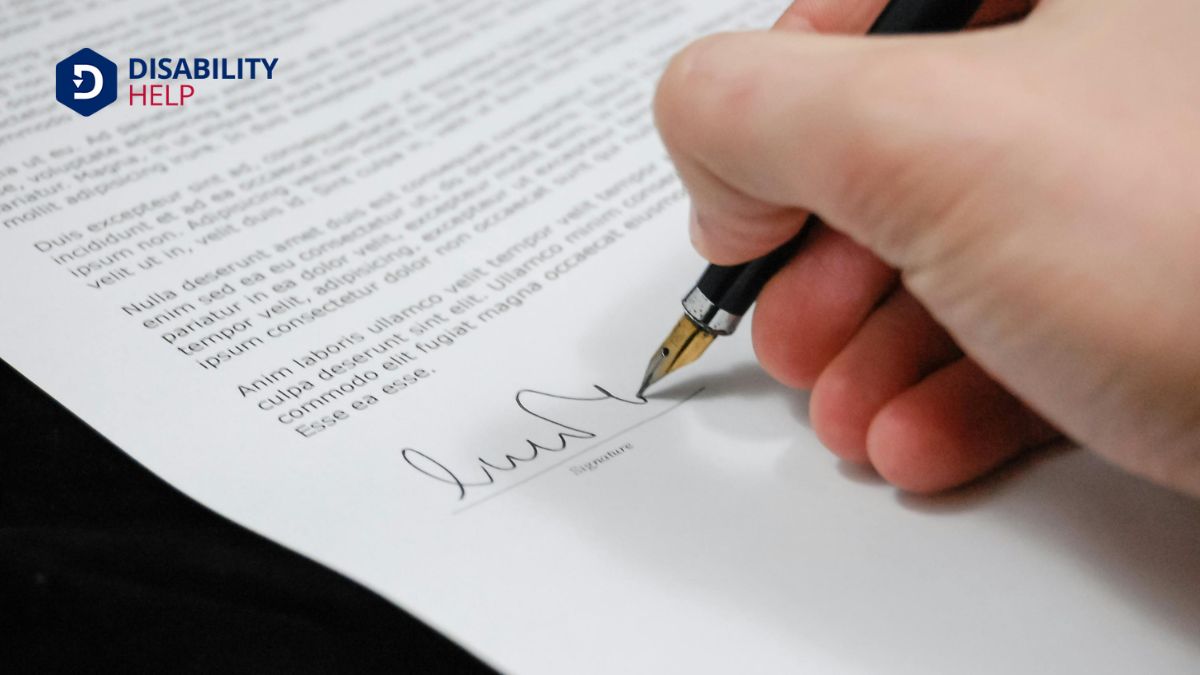When preparing claim documentation, we need to include the debtor's name, case number, and details of the creditor. Specify the claim amount, its basis, and any priority claims. Attached is redacted proof of debt and lien documentation, along with complete copies of the power of attorneyA legal document that gives one person the authority to act on behalf of another, often used when an.... Verify the accuracy and relevance of all supporting documents. Clearly break down any contract time and sum adjustments with appropriate justifications. Validate that every piece of paperwork is thoroughly documented, certified, and signed. If we confirm these elements are in place, our claim will be solid and credible. Curious about the in-depth process and additional tips?
Key Takeaways
- Include the debtor's name, case number, and creditor's details.
- Specify the claim amount, basis, and any priority or secured status.
- Attached are redacted proofs of debt and lien documentation.
- Provide certified copies of all supporting documents and power of attorney.
- Document all credits and acknowledge payments accurately.
Essential Claim Information
When preparing claim documentation, it's [IMPORTANT] to include all necessary information so that the claim is processed efficiently.
First, we need to provide the debtor's name and the case number. This helps identify which case our claim relates to.
Next, we should include the creditor's details, such as our name and contact information, to [GUARANTEE] proper communication.
The amount of the claim and the basis for the claim are [ESSENTIAL] pieces of claim information. This tells the processor why we're requesting the amount stated.
For secured claims, we must detail the property securing the claim, provide lien documentation, state the interest rate, and mention any past-due amount.
Priority claims need to be clearly identified, specifying the amount entitled to priority. This [ENSURES] our claim is treated correctly according to its urgency and importance.
We must accurately account for any credits for payments received, which helps avoid inaccuracies. An authorized signature is required on the form to validate our claim.
Though supporting documents like redacted debt proof are necessary, they're discussed separately.
All these elements are included in our documentation [GUARANTEES] to ensure a smooth and efficient claim process.
Supporting Documents

When we gather supporting documents for our claim, we need to include redacted copies proving the debt's existence and lien documentation showing any security interest.
It's important to attach papers that verify the perfection of the security interest and provide full copies of any power of attorney.
Essential Document Attachments
Supporting documents are necessary to substantiating any claim. When preparing claim documentation, we need to make sure that every piece of evidence is in place to support our assertions. This includes attaching redacted copies of documents that verify the debt's existence. Such redactions help protect sensitive information while still providing the necessary proof.
For secured claims, it's important to include lien documentation. This shows that the claim is backed by a legal right to seize property if the debt isn't paid. Alongside this, we must provide documents that demonstrate the perfection of a security interest. These documents confirm that the security interest is legally enforceable against third parties.
Remember, instead of sending original documents, we should submit complete copies. This ensures that our records remain intact while still providing what's needed for verification.
Including all necessary paperwork is crucial; for example, if a power of attorney is involved, it must be part of the claim documentation.
Verification and Certification
Maintaining the integrity of our claim documentation hinges on careful verification and certification. When we submit a claim, the supporting documents must be validated for both accuracy and relevance. This process isn't just a formality; it's essential for guaranteeing that every detail in our documentation holds up under scrutiny. Verification helps us confirm that the information provided is correct and pertinent to our claim, which directly impacts our claim's credibility.
Certification of supporting documents is equally important. By including certified copies, we validate the authenticity of our claim. Think of certification as a stamp of approval, showing that the original documents have been examined and deemed genuine. This step is crucial for claim approval, as it offers assurance that our documentation is both accurate and complete.
To achieve this, we need to be diligent in our verification efforts. Each detail within the supporting documents should be carefully checked to ensure it's correct. This attention to detail not only strengthens the credibility of our claim but also streamlines the approval process.
Including certified copies of necessary documents substantiates our claim, making our claim documentation strong and dependable.
Contract Time Adjustments

When addressing contract time adjustments, we need to specify the exact days and dates involved to justify the extension.
It's important to clearly outline and support the reasons for the additional time, ensuring the claim is certified as made in good faith.
This detailed documentation helps us build a strong, credible case for the time adjustment sought.
Specify Days and Dates
To secure a smooth process when requesting a contract time adjustment, it's crucial to specify the exact days and dates for which the extension is needed. By clearly identifying these specifics, we establish transparency and avoid any misunderstandings. This precise information serves as the foundation of our extension justification, demonstrating a comprehensive understanding and documentation of the delays.
When we specify days and dates, we present a clear timeline that supports our claim in good faith. This means our request is based on accurate information, increasing the likelihood of acceptance.
Additionally, a detailed breakdown of the amount sought for adjusting the contract sum should accompany the request. This breakdown helps to elucidate the impact of the delays and provides a clear view of the financial implications.
We should also be prepared to provide additional information if necessary. Whether it involves undergoing an expert review or submitting further documentation, these actions help validate our claim. By ensuring our documentation is thorough and precise, we strengthen our case for a contract time adjustment and demonstrate our dedication to upholding project integrity and transparency throughout the process.
Justify Time Extension
Having specified the exact days and dates for the requested extension, our next step involves providing a strong justification for the time adjustment. We must deliver clear and detailed explanations for the time extension, ensuring our reasons are well-founded and documented. This part of our claim documentation is significant because it establishes the rationale behind the contract adjustment.
First, let's delve into the breakdown of the contract sum. We need to outline the amount being sought related to the time extension. This contract sum breakdown should be precise and reflect any additional costs incurred due to the extended timeline. Including a good faith statement is also crucial, as it certifies that our claim is genuine and supported by the necessary documentation.
Moreover, we should reserve the right to have an expert review or provide additional information if needed. This showcases our readiness to back up our justification with further evidence if necessary. By presenting all these elements clearly, we reinforce the validity of our request and pave the way for a fair evaluation. Remember, detailed explanations and necessary documentation are essential for a successful claim.
Certify Claim Validity
Certifying our claim for contract time adjustments is vital for a fair assessment. We must validate claim accuracy by providing a detailed breakdown of the reasons behind our request. This includes specific dates and justifications for the extension, guaranteeing our claim documentation is thorough and precise.
When seeking an extension, we need to include supporting evidence that backs up our reasons. This evidence might consist of project delays due to unforeseen circumstances or changes in project scope. By clearly stating the amount sought for the time adjustment, we leave no room for ambiguity.
It's also important that we make our claim in good faith, demonstrating our commitment to transparency and honesty. To reinforce the validity of our claim, we should be prepared for an expert review if needed. This ensures that an unbiased third party can verify the legitimacy of our request.
Lastly, gathering all required supporting documentation is crucial. This might include emails, progress reports, and any other relevant materials that substantiate our claim. By following these steps, we can confidently validate the accuracy of our claim for a contract time adjustment.
Contract Sum Adjustments

When documenting contract sum adjustments, it's vital to present a detailed breakdown of the amount you're seeking. This is necessary to ensure clarity and help substantiate the claim documentation. To make the process simple, we should include:
- A precise breakdown of adjustments highlighting the amount sought.
- Clear justification for the extension in contract time.
- Specific time modifications with days, dates, and reasons.
- A declaration of good faith certifying the integrity of the claim.
By detailing the amount sought, we make it easier for reviewers to understand the financial implications. This breakdown of adjustments should be supported by relevant data and calculations.
Equally important is the justification for any elongation in contract time. We need to pinpoint the exact days and dates along with the reasons for these time modifications to provide a complete picture.
A declaration of good faith is necessary. It asserts that the information provided is accurate and made in good faith.
Certifying the Claim
Validating the claim is a pivotal step to confirm that our documentation stands up to scrutiny. Affirming the claim involves providing a statement that verifies the claim was made in good faith. This verification should declare that the information given is accurate to the best of the claimant's knowledge.
When we affirm a claim, we're making a legally binding attestation of its validity and accuracy. This is more than just a formality; it's a critical step in the process of substantiating and confirming a claim for consideration and approval. It's essential that the verifying statement is truthful and backed by appropriate documentation. Any inaccuracies or unsupported claims can lead to significant issues down the line, including potential legal consequences.
To guarantee the highest level of accuracy, we must gather all pertinent documentation and review it thoroughly before making our verification. This step ensures that the information we've provided is reliable and complete.
Documentation Submission
Submitting the required documentation is an important step in the claim process, as it provides the necessary details for verification and approval. When we talk about documentation submission, we need to make sure it's smooth to avoid delays or rejections. Let's break down what's necessary.
First, we should gather all identifying information about the bankruptcy debtor and creditor. This includes names, addresses, and contact details.
Next, we must clearly state the claim amount and the basis for the claim, providing context and justification.
For secured claims, additional details are required:
- Property details related to the secured claim.
- Lien documentation copies to prove the security interest.
- Information on the interest rate and past due amount.
When dealing with a priority claim, it's important to specify:
- Entitlement to priority.
- Amount entitled to priority.
- Adherence to legal limits.
Moreover, we need to make sure all credits are documented accurately and acknowledge any received payments. Attaching the right documents, such as redacted debt documentation and proof of security interest, is crucial.
Don't forget to include a legally binding signature for validation.
Accurate and thorough documentation submission ensures our claim is processed efficiently and correctly.
Additional Resources

To guarantee a smooth claim process, we have a variety of additional resources at our disposal. One key resource is the inclusionThe practice of creating environments in which any individual or group can be and feel welcomed, res... of edited copies of documents that confirm the debt's existence. These copies help validate the claim without exposing sensitive information.
For those filing a secured claim, attaching lien documentation is essential. This illustrates the legitimacy of the claim and the security interest involved.
Furthermore, it's vital to provide detailed property information, especially if the property secures the claim. This involves listing interest rates and any past-due amounts. Accurate property details ensure openness and facilitate the evaluation process.
Another essential resource is the Proof of Claim form. We must complete this form diligently and sign it to acknowledge any credits received. A properly filled-out form strengthens the claim's integrity and helps avoid delays.
Lastly, remember to attach duplicates of all necessary paperwork supporting the claim. Never send original documents; duplicates suffice and offer protection against loss. Utilizing these resources guarantees our claim documentation is thorough, accurate, and ready for assessment. By following these guidelines, we streamline the process and enhance the likelihood of a successful claim.
Frequently Asked Questions
What Should Be Included in a Claim?
We should include the debtor's name, case number, creditor's details, amount claimed, and claim basis. For secured claims, add property details and lien documentation. Priority claims need priority amounts. Attach proof of debt and security interest evidence.
What Should a Claim Statement Include?
We should include the debtor's name, case number, and creditor's details in a claim statement. Specify the claim amount, basis, and any security interest. Attach redacted copies and lien documentation to support the claim.
What Are the Claim Documents?
We need to include the Proof of Claim form, secured claim details, priority claim amounts, payment credits, redacted debt proof, lien documentation, and power of attorney copies. These documents guarantee our claim submission is complete and accurate.
What Documentation Is Included With a Claim for Payment?
When we submit a claim for payment, we need to include a factual statement, specific dates, knowledgeable employees, supporting contract documents, copies of supporting evidence, details on adjustments, a certifying statement, and a warning for expert review.
Conclusion
Let's remember that comprehensive claim documentation is vital for successful outcomes. By including necessary information, supporting documents, time and cost adjustments, and proper certification, we guarantee our claims are strong and credible. Timely submission of well-organized documentation can't be overstressed. For more details, refer to supplementary resources. Together, we can navigate the intricacies of claim documentation effectively and efficiently.






